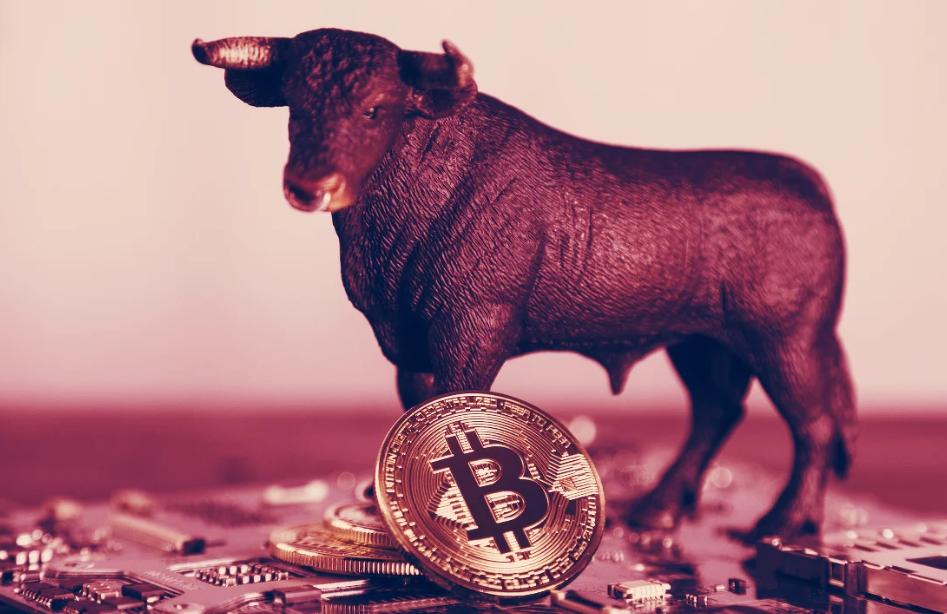Gold prices have repeatedly broken historical highs; why can't "digital gold" Bitcoin do the same?
Author: ChandlerZ, Foresight News
At the beginning of 2025, global capital markets are experiencing a stark contrast. Recently, the spot gold price has repeatedly hit new highs. As of February 16, the COMEX gold futures price surged to $2968 per ounce, with a maximum increase of nearly 10% within the year, just a step away from the $3000 mark.
Meanwhile, after breaking the $100,000 high, Bitcoin has been oscillating between $90,000 and $110,000, showing weakness that contradicts its new identity as a safe-haven asset. This volatility not only exposes the differences in pricing logic between the two asset classes but also points to a re-evaluation of risk metrics by global capital in the "Trump 2.0 era."
Bitcoin VS Gold: From Safe-Haven Narrative to Functional Differentiation
The evolution of Bitcoin's correlation with U.S. stocks and gold is essentially a process of shifting identity recognition in its financialization journey. Measured by the correlation coefficient between Bitcoin and traditional assets, its correlation exhibits significant dynamic changes.

Gold, as a traditional safe-haven asset, has a relatively complex relationship with Bitcoin. From a long-term data perspective, the correlation between Bitcoin and gold shows significant instability, frequently fluctuating between positive and negative ranges. In the early days, the correlation coefficient between the two was often negative, with Bitcoin seen as a "digital substitute" for gold. However, during the market turmoil after 2022, the two have often shown synchronized movements. By late 2024, the correlation trended positive, but volatility remained evident.
This contradiction stems from the differences in their attributes: gold's safe-haven function relies on its physical properties and historical consensus, while the narrative of Bitcoin as digital gold depends more on market sentiment and technological expectations. When Bitcoin reached its historical high in 2021, gold prices were at a temporary low. Starting in 2024, both assets rose simultaneously due to factors such as central bank gold purchases and the approval of Bitcoin ETFs. It is evident that their correlation is driven by episodic events rather than an inherent logical connection of value.

U.S. Stock Correlation: A Double Helix Structure Under Liquidity Siphoning
In terms of U.S. stocks, Bitcoin is often classified as a "risk asset," with its price movements showing a significant positive correlation with the tech-heavy Nasdaq index. This correlation peaked in 2021, with both hitting historical highs before retracing, and again hitting bottom and rebounding together at the end of 2022, demonstrating a consistency in market behavior driven by risk appetite.
The correlation between Bitcoin and the S&P 500 index shows a milder positive correlation, with the correlation coefficient mostly maintained between 0 and 0.5. Bitcoin's price increase significantly outpaces that of the S&P 500, and price coordination is clearer in high-point areas. This relationship became particularly evident in late 2024, when expectations for a dovish shift by the Federal Reserve boosted risk assets broadly.
During the period when the Federal Reserve signaled interest rate cuts, this correlation even exceeded the negative correlation strength traditionally seen between tech stocks and bonds. The strength of their association has surpassed the group effect among traditional tech stocks, suggesting that cryptocurrencies are systematically embedding themselves into the valuation framework of growth stocks. However, it is worth noting that this positive correlation exhibits significant asymmetry: during market downturns, the correlation coefficient of declines between Bitcoin and U.S. stocks is not high, revealing the characteristic of excess risk premium under high volatility.

This phenomenon can be explained from the perspectives of market psychology and liquidity. When global economic expectations improve, investors' risk appetite increases, leading to simultaneous inflows into both U.S. stocks and Bitcoin; conversely, when market risk aversion rises, both may come under pressure. According to QUICK FactSet data, the total market capitalization of stocks worldwide, denominated in U.S. dollars, increased by $13.6 trillion compared to the end of 2023, reaching $121.8 trillion, while Bitcoin's increase during the same period exceeded 150%, confirming the joint push of liquidity easing and risk appetite on both. However, the high valuation of U.S. stocks also implies a risk of correction; if the stock market adjusts, Bitcoin may face synchronized pressure, while gold could benefit from safe-haven demand.
Reshaping Financial Attributes
The changes in the correlation between Bitcoin, U.S. stocks, and gold reflect a structural transformation in the participants of the cryptocurrency market. In the early days, Bitcoin was primarily held by retail investors and geek communities, with its price independent of the traditional financial system. However, after 2020, the involvement of institutional investors accelerated its financialization process, making it more susceptible to sentiment contagion from U.S. stocks. The growth of open interest in Bitcoin futures on the Chicago Mercantile Exchange (CME) further reinforced this path. Additionally, institutional variables such as the U.S. SEC's approval of Bitcoin spot ETFs and differences in regulatory policies across countries have long-term impacts on Bitcoin's asset attribute positioning.
The high-level fluctuations of Bitcoin following its breakthrough above $100,000 stem from the interplay of multiple market forces. On one hand, early investors gradually realize profits at high levels, while new funds from institutional channels like ETFs provide strong support, leading to sharp price fluctuations within a range due to the ebb and flow of buying and selling forces.
On the other hand, the current market is still in a period of brewing expectations for easing, with large-scale liquidity injections yet to materialize. The market is primarily rotating existing funds among different price levels, and the lack of sustained incremental capital inflows also limits upward momentum after breaking new highs. At the same time, the use of leverage tools such as futures and perpetual contracts is more active, with high leverage amplifying price volatility and frequent forced liquidations further exacerbating market fluctuations.
Overall, however, the reflexivity of technological innovation is also nurturing new possibilities. Currently, Bitcoin is being incorporated into the asset-liability management framework of sovereign wealth funds; appropriate allocation of crypto assets can enhance tail risk defense capabilities while maintaining stable Sharpe ratios. This functional evolution suggests that the correlation between crypto assets and traditional assets will exhibit a more complex hierarchical structure, fluctuating as risk assets during macro stability periods and releasing nonlinear correlations during systemic crises, ultimately developing into an independent asset class positioning.
In the myth of Noah's Ark, clean creatures enter in pairs, while unclean creatures go their own way. The correlation dilemma between Bitcoin and traditional assets resembles a "financial monster" that cannot find companions in the flood of digital civilization. Perhaps this lack of correlation is its true nature, needing neither to benchmark against millennia-old hard currencies nor to be associated with technological bubbles, but rather to redefine value coordinates as a blockchain-native anomalous asset.










